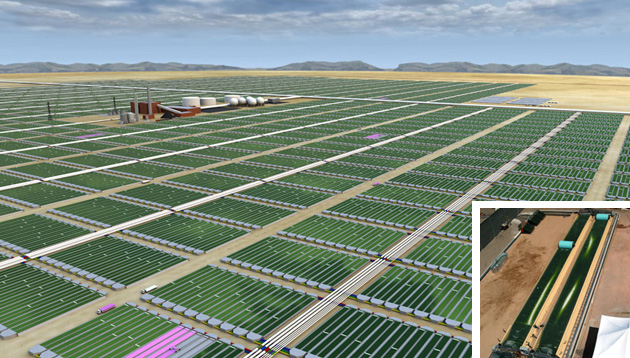Fuels Of The Future
Ethanol
Biodiesel
Hydrogen
Links
Biodiesel is equivalent to petrodiesel and is commonly derived from vegetable oils (Biodiesel-Wikipedia). True biodiesel is often confused with pure vegetable oil and organic waste oils. Biodiesel can be run in unmodified diesel engines and is often a higher quality fuel than petrodiesel. It can come from many different feedstocks, soybeans being one of the more predominant sources. Yields of about 48 gallons per acre can be expected from soybeans and some algae's can produce about 10,000 gallons per acre but have seen limited production on a large scale.

An experimental
farm of algae that can be used for biodiesel. The company is Solix
Biofuels in Colorado. Photo courtesy of Popular
Mechanics.
Biodiesel looks to be a promising substitute for petrodiesel, but it is not without drawbacks (Biodiesel-Wikipedia). For starters it has a high freezing point, so it will start gelling up around 14 °F depending on the exact type of biodiesel blend. Now most of us can imagine the huge problems that would occur using biodiesel in Fairbanks. But there are ways around it. By cutting the biodiesel with kerosene, petrodiesel or commercially available additives the point at which it freezes can be lowered. Another solution would be to have heat traces on the fuel lines and good block heaters to plug them in overnight to keep the diesel flowable (of course we already do this in Fairbanks).